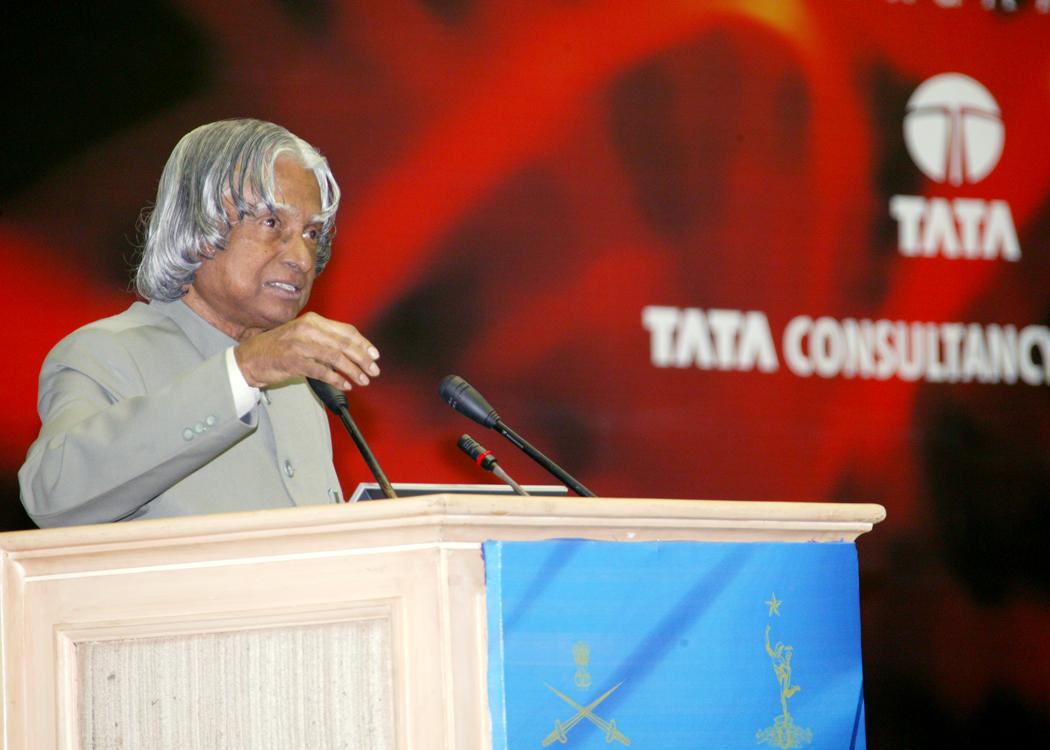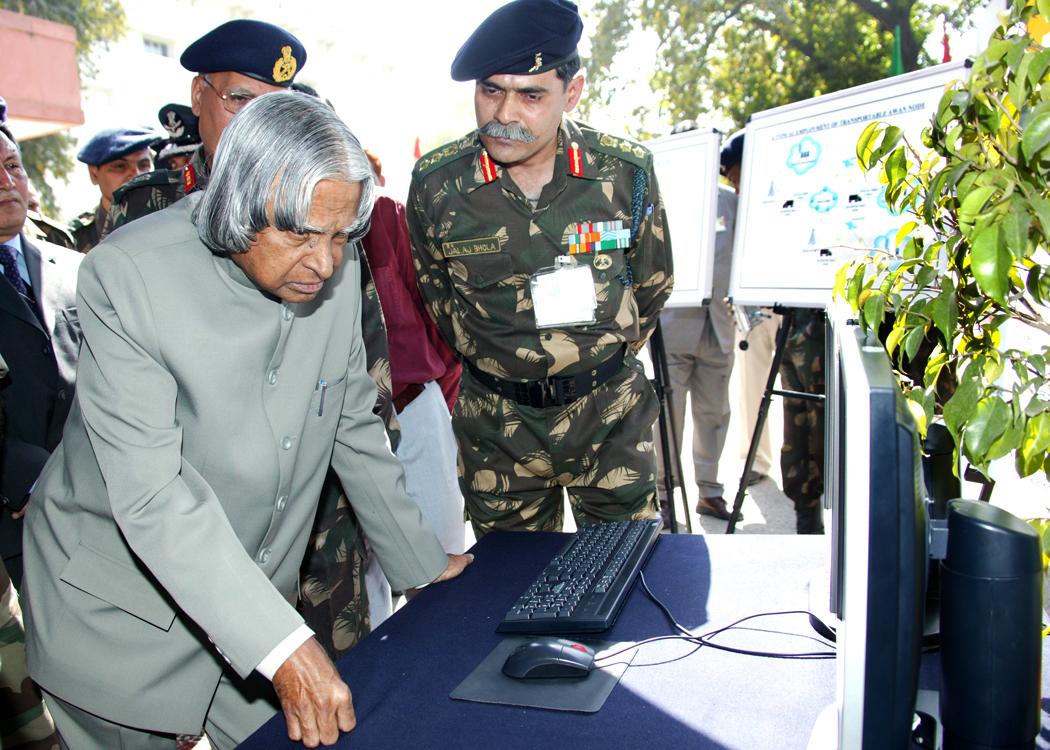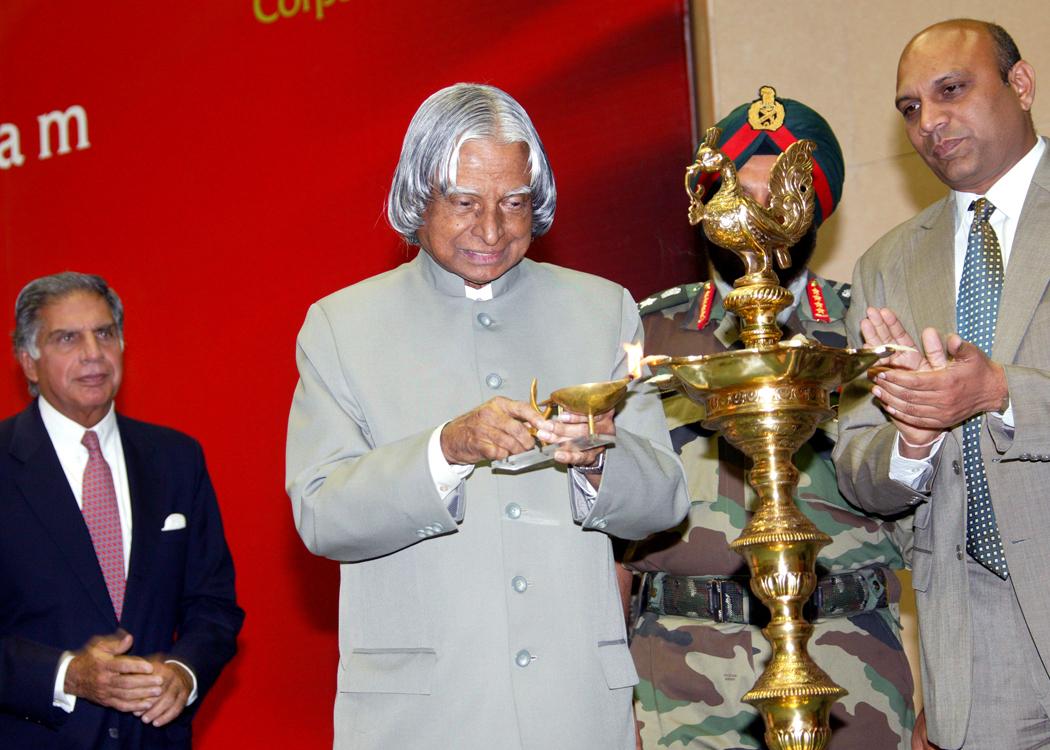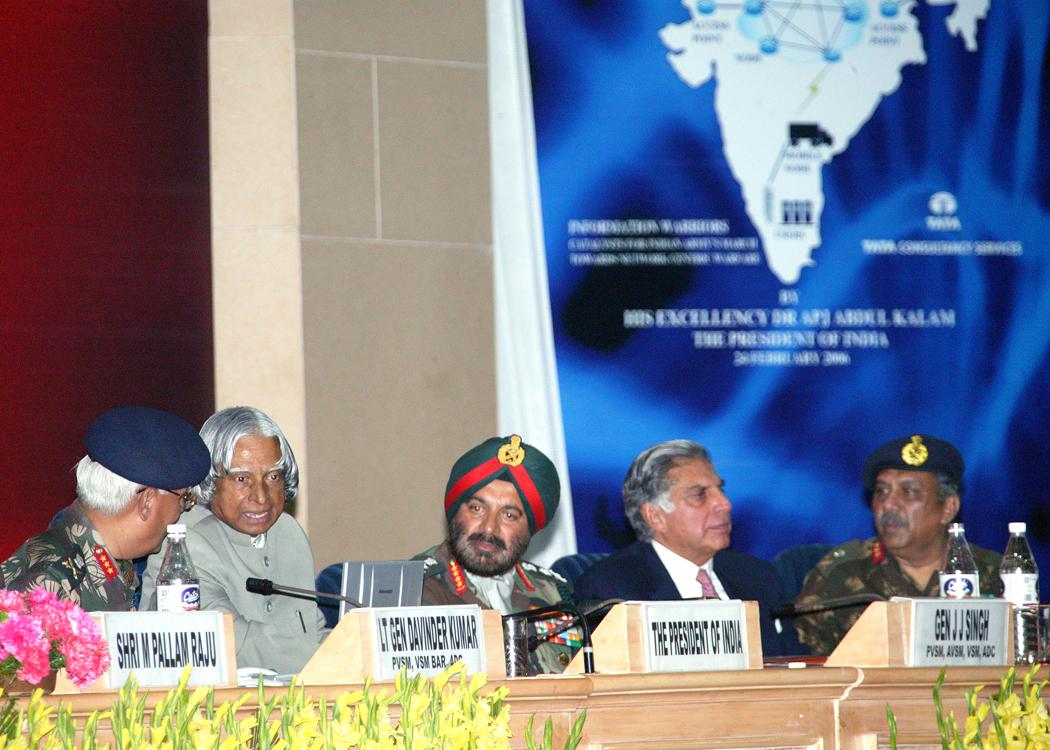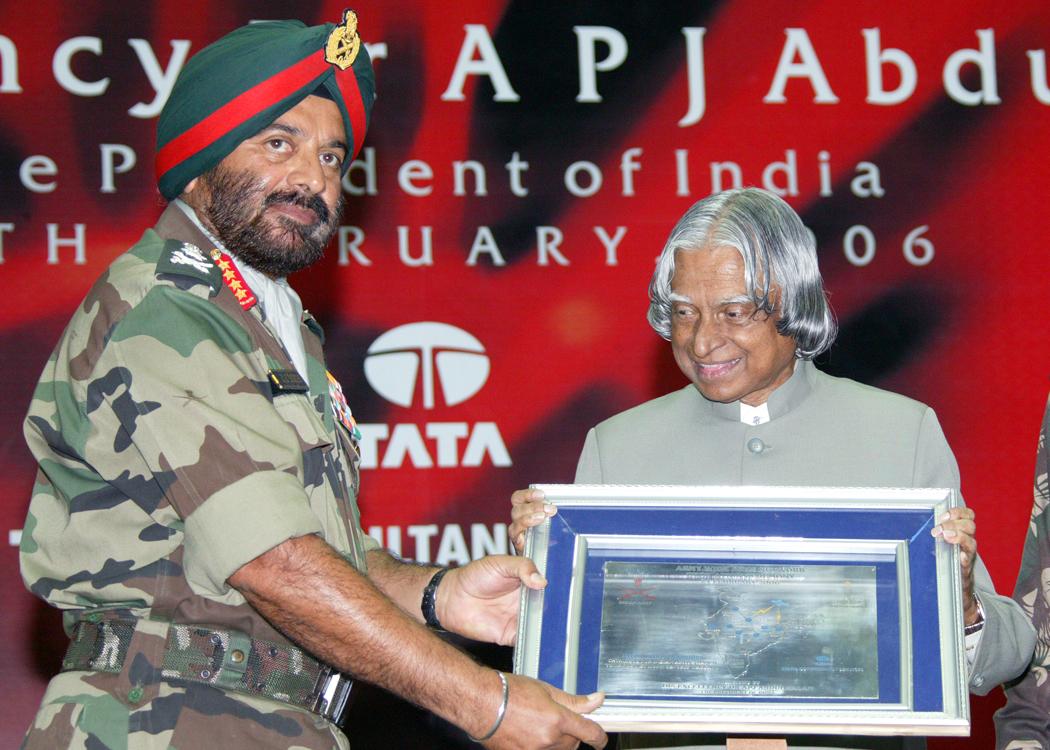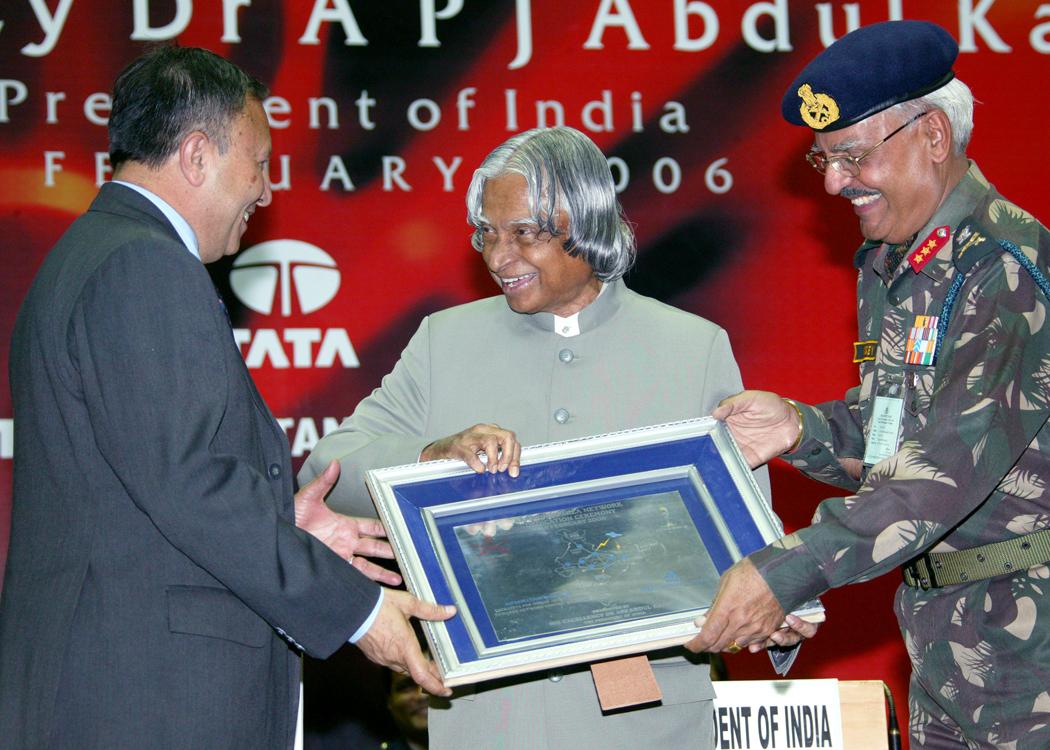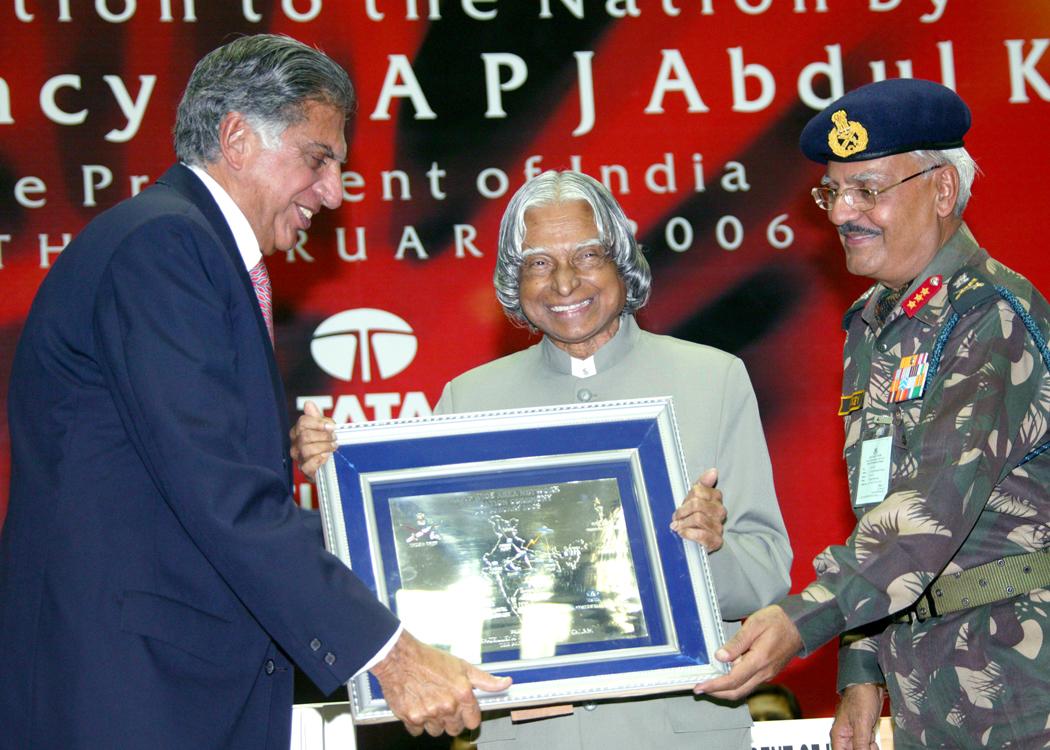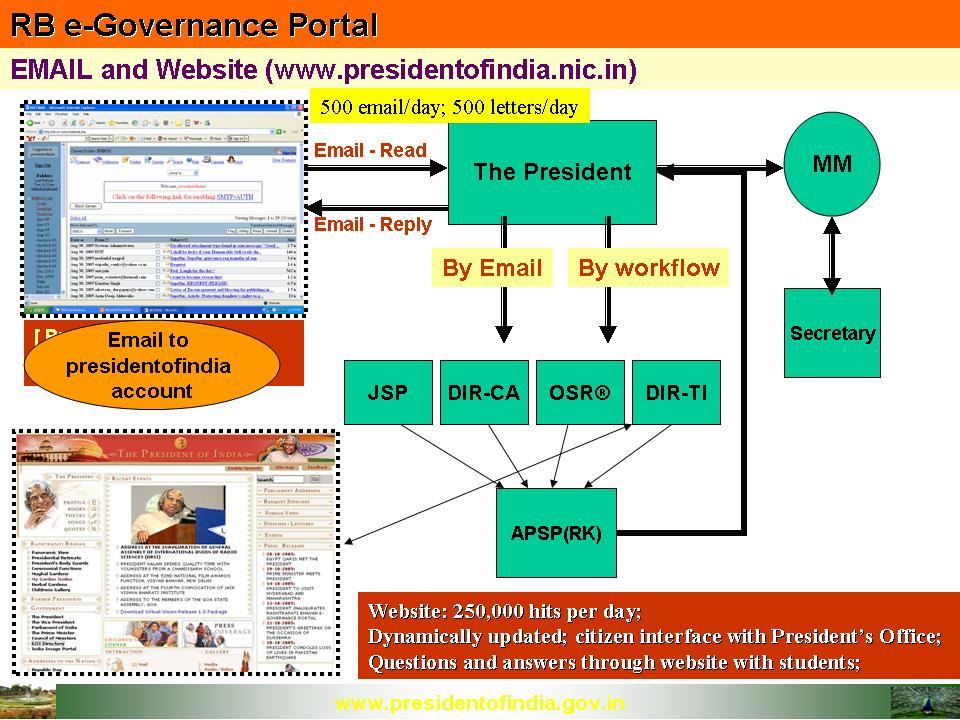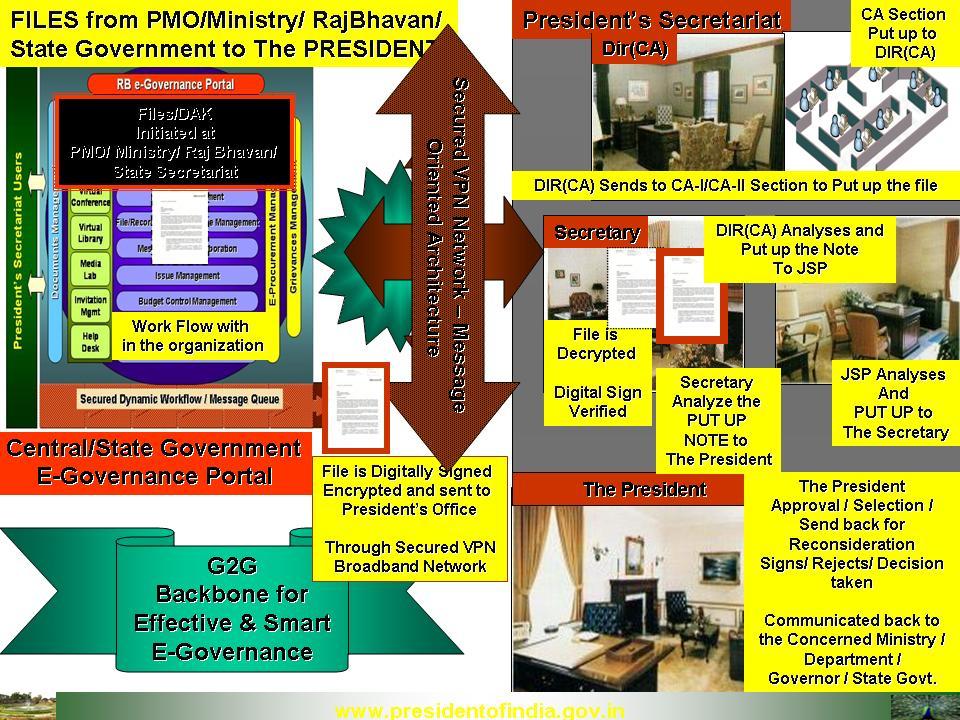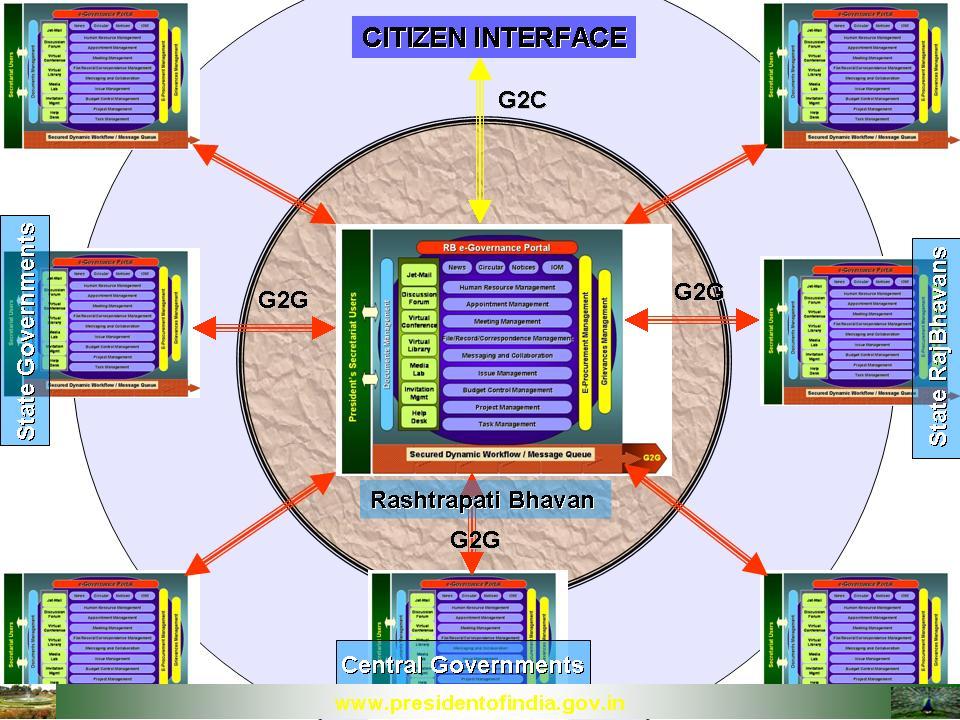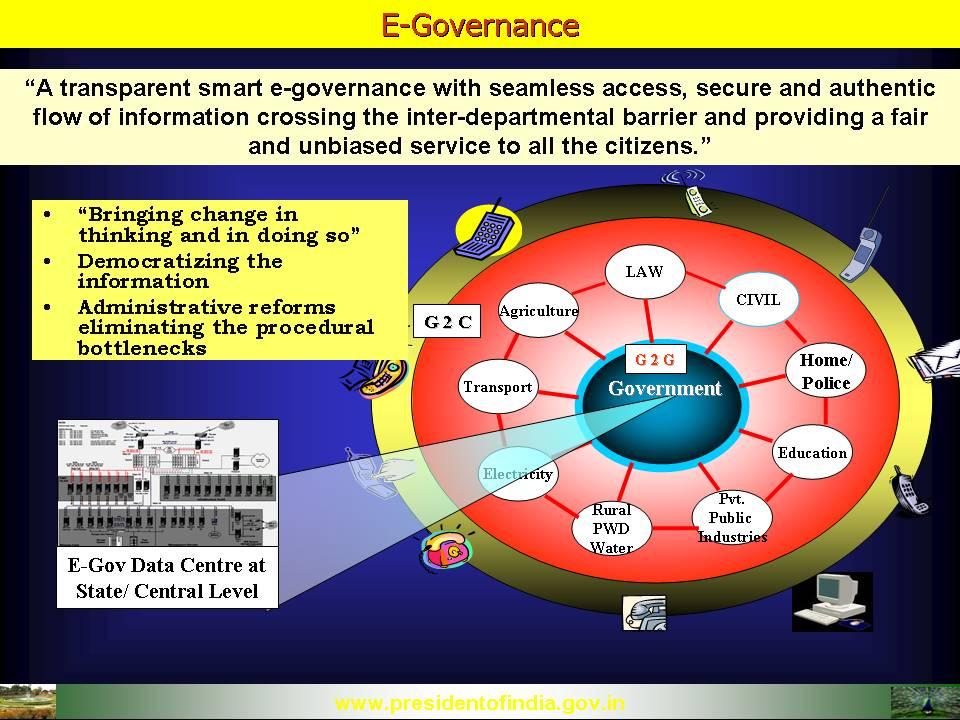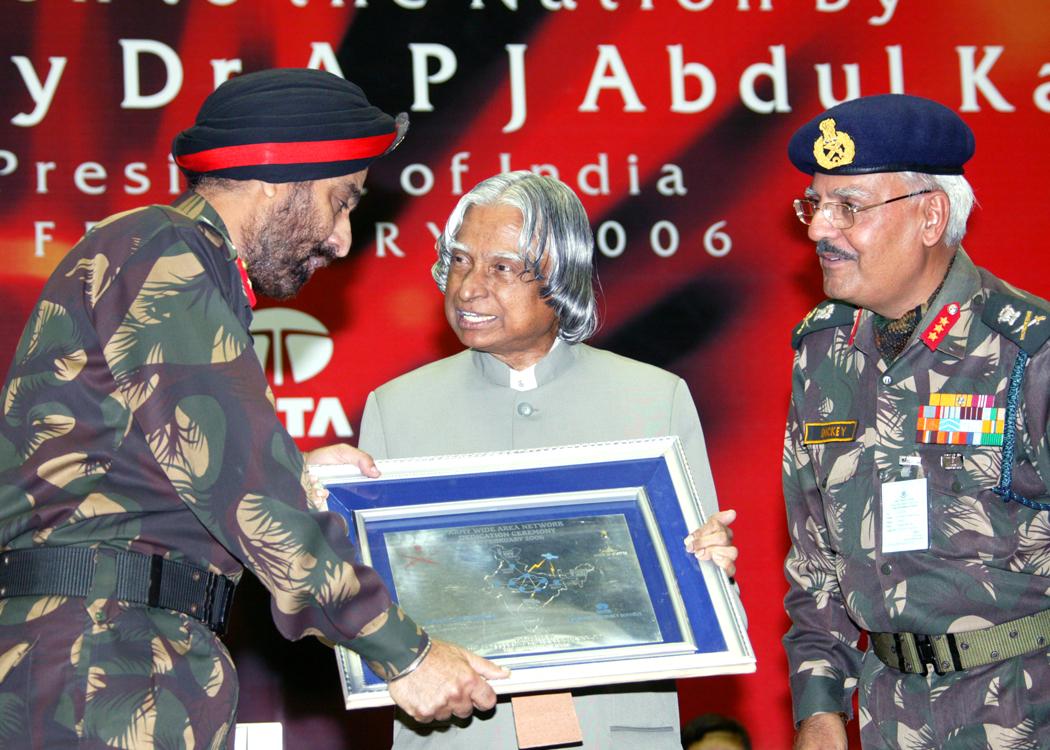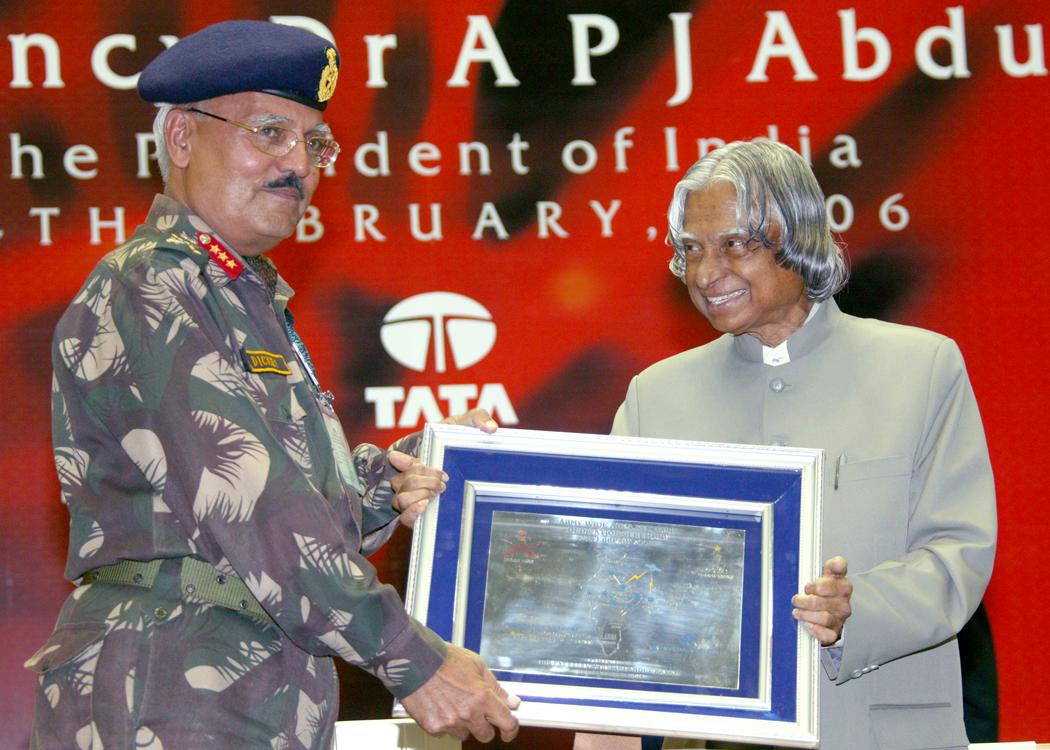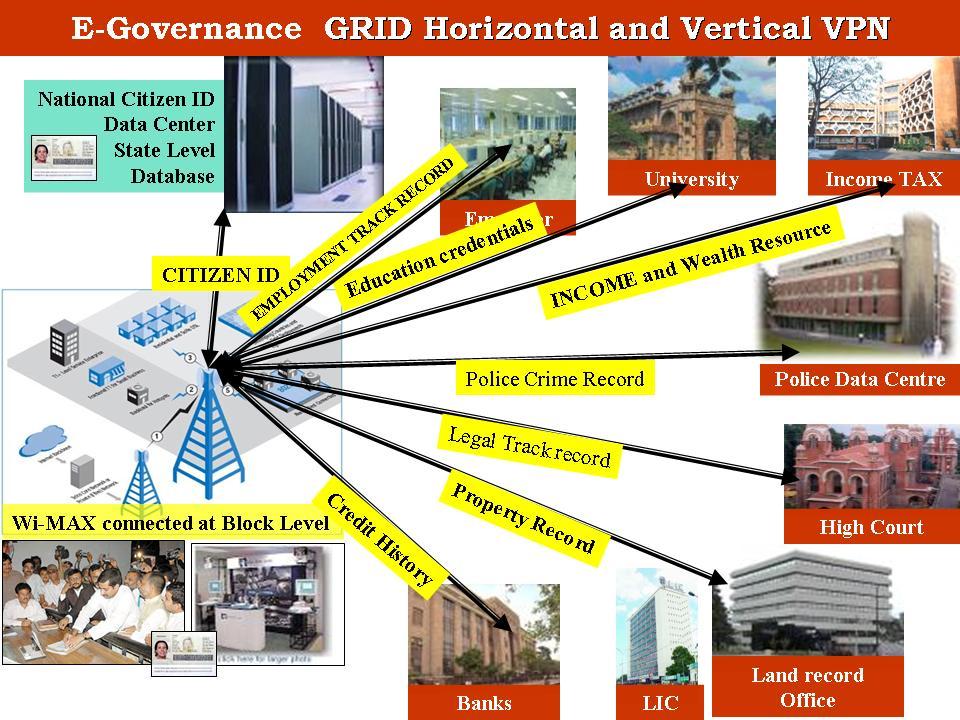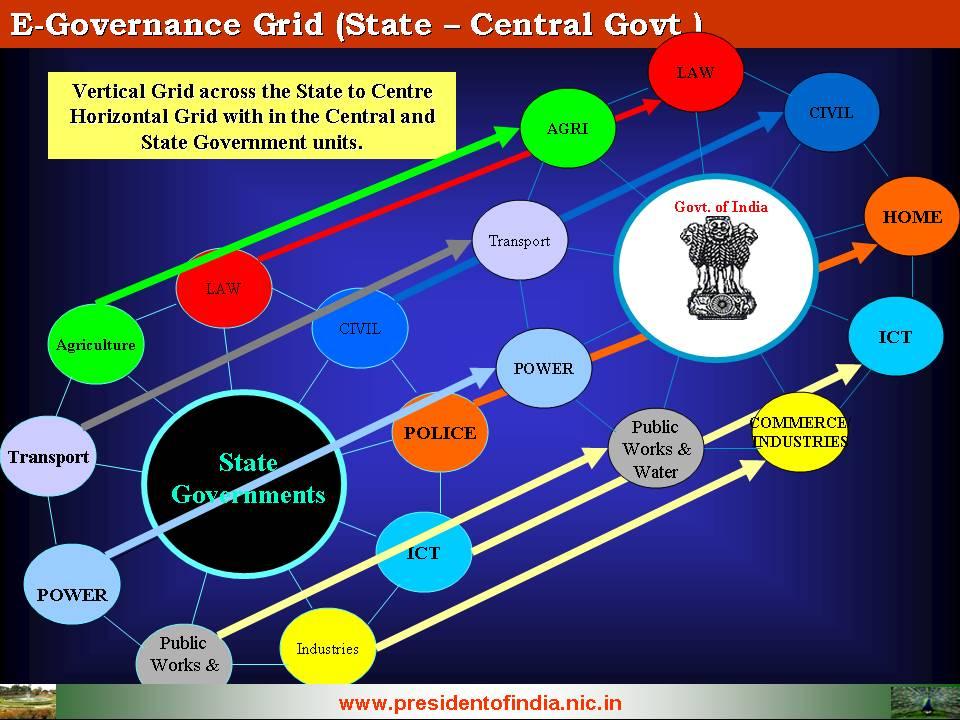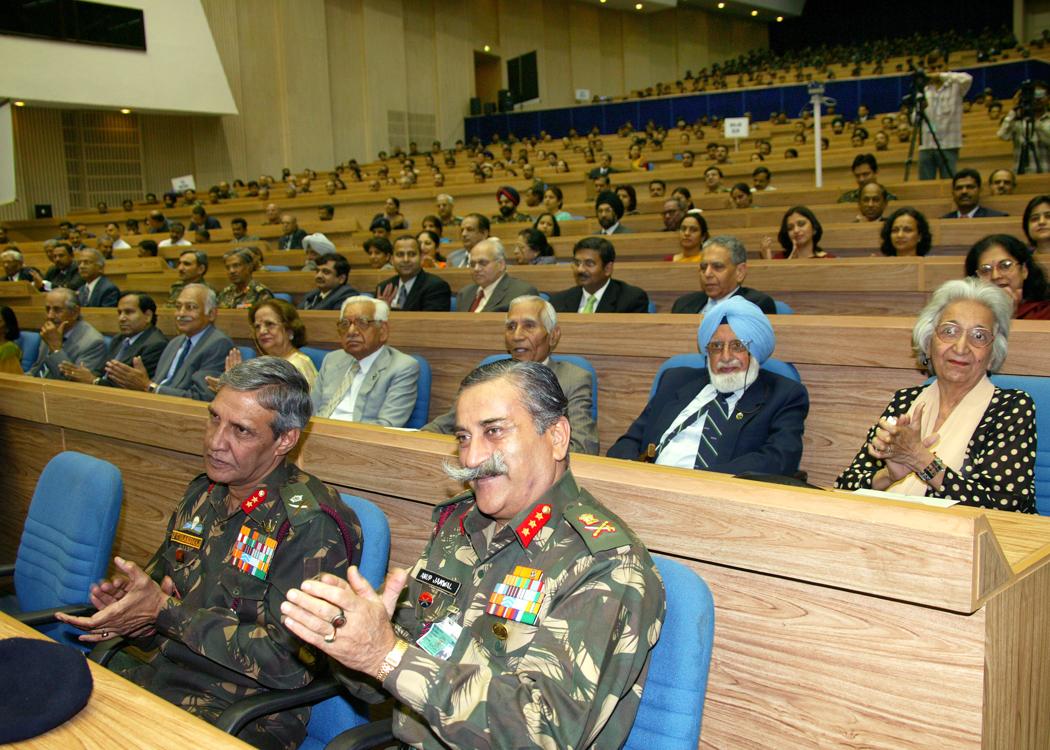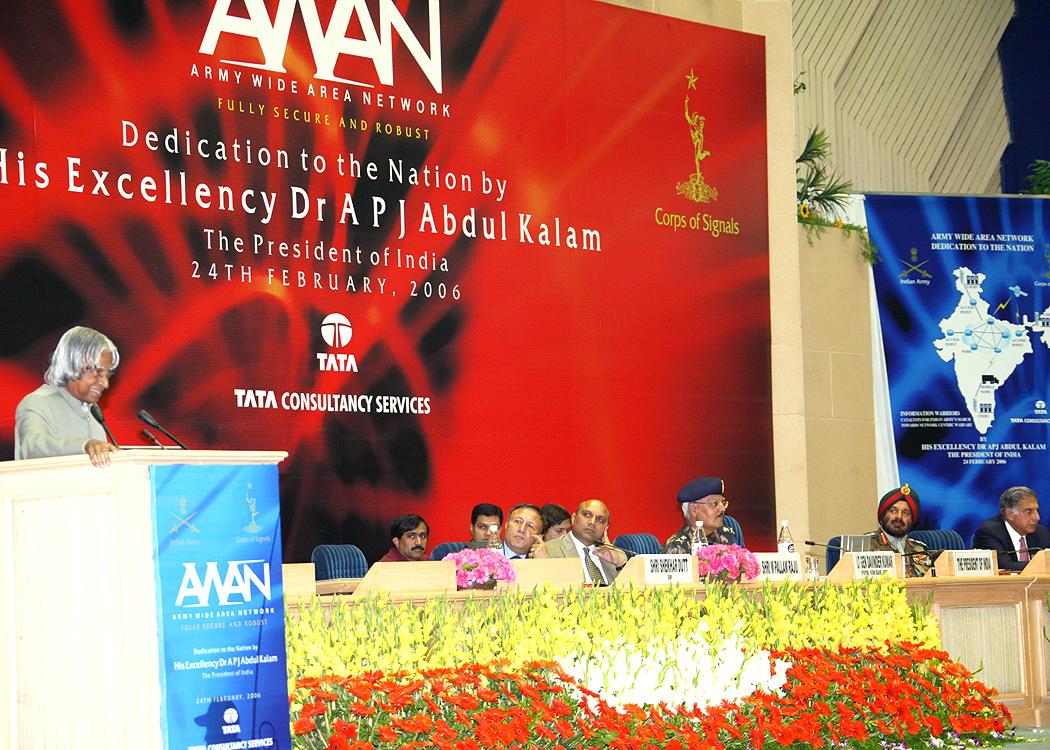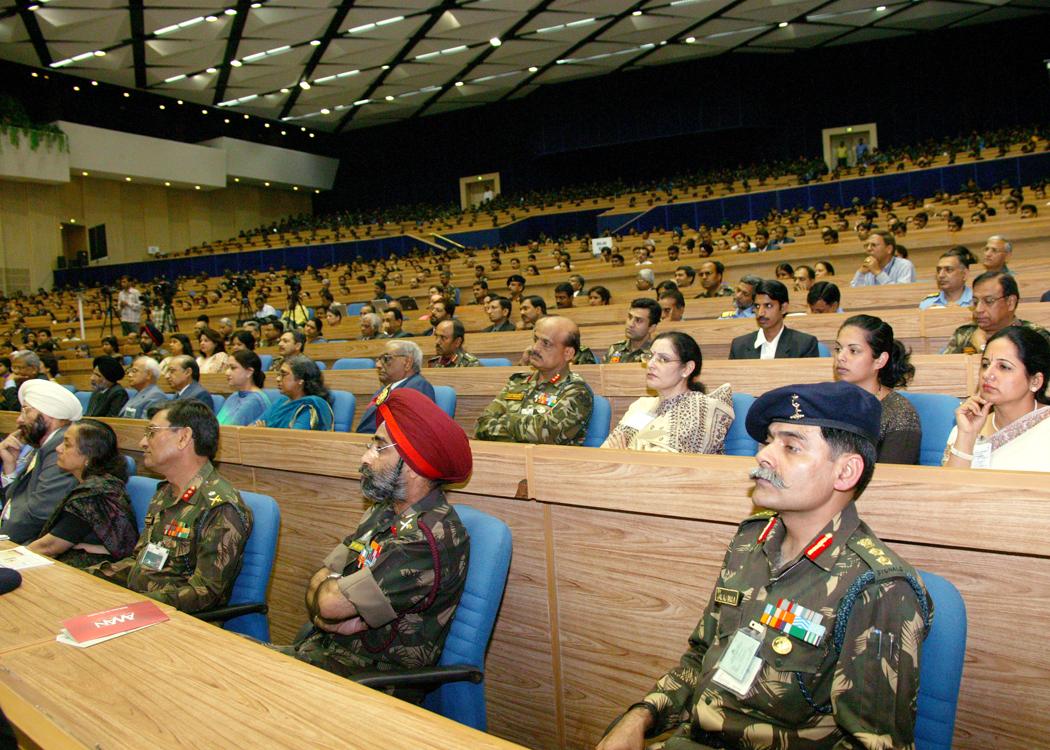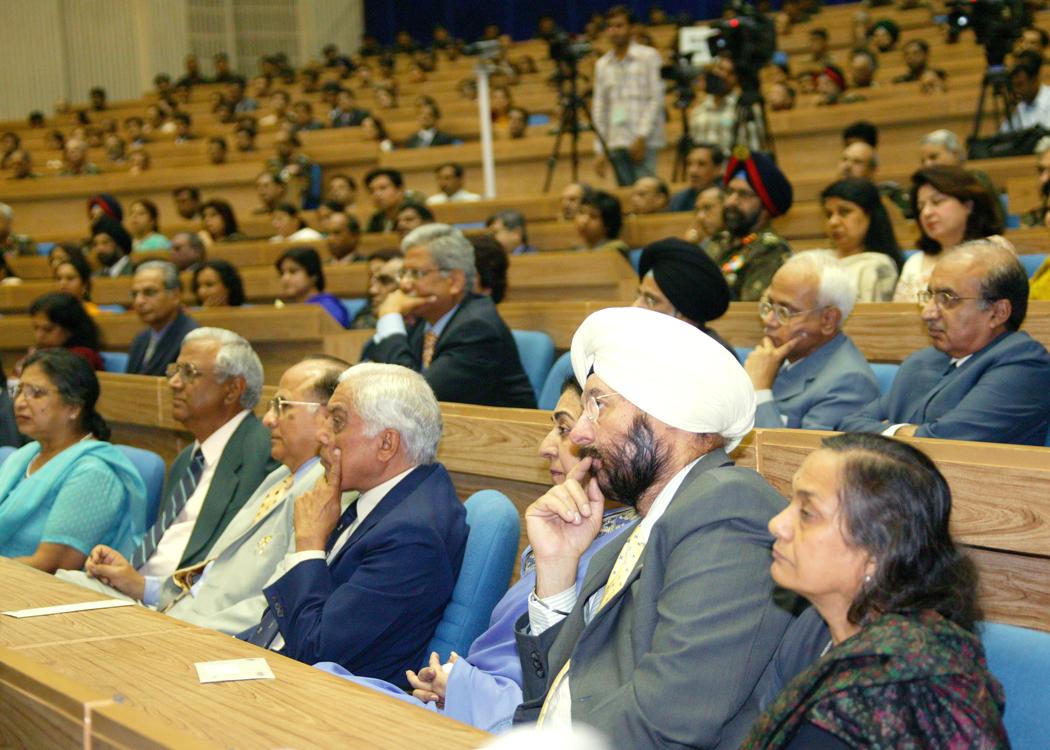Address At The Inauguration Of The Army Wide Area Network(Awan), New Delhi
Vigyan Bhavan, New Delhi : 24-02-2006
Transforming AWAN into e-Governance GRID
I am indeed delighted to participate in the Inauguration of the Army Wide Area Network (AWAN) organized by the Corps of Signals, Indian Army. I am very happy to dedicate the Army Wide Area Network to the nation on behalf of the Indian Army. Successful fielding of AWAN covering all the hundred and seventy four signal centers with state-of-the-art system design, system integration and system implementation is definitely a commendable effort towards self-reliance in establishing a complex communication and IT infrastructure in the Indian Army. I am happy to see the integrated services framework built on top of the secured virtual private network over the AWAN data centre. It provides messaging services, directory services and security services along with VoIP and Internet access amongst its signal centers under the umbrella of public key infrastructure with digital signature. I congratulate Corps of Signals for their work in partnership with the Indian partner Tata InfoTech Ltd. for undertaking this work and completing it in time.
Governance in Defence
For our country of sub continental dimension with varying terrains and climatic conditions and the long coastline of 7000 km, the state of the art Wide Area Network is an important defence requirement for e-governance. The wide area network, in addition to Army, may encompass the entire defence services and the inter-linkages with other departments of the Government of India, particularly those dealing with national security matters and related decision making process. The topic I have selected for discussion today is "Transforming AWAN into e-Governance Grid".
Cyber Space
Revolution in military affairs has brought in new philosophies and concepts to warfare including the present day military operations. It is now clear that Cyber-Space will add a fifth dimension to Land, Sea, Air and Space as a theatre for war and conflict. Cyber Space is the nerve center of Nation?s Critical Infrastructures and is composed of hundreds of thousands of interconnected computers, servers, routers, switches, and fiber optic cables. AWAN is a part of this nerve system. Efficient utilization of cyber space will call for, fullest usage of the information technology tools. Information Technology is a double edged weapon: it provides vast opportunities but simultaneously introduces new vulnerabilities and threats ? which may arise through computers, content and connectivity or to put it differently, hardware, software, information and networks.
Survivable Infrastructure
Information is an asset of the Army. The information infrastructure which you are creating today with state-of-the-art technology and connectivity with continuous updating mechanism is a vital operational resource and will become the central nerve system of the Armed Forces where the bits and bytes travel in an encrypted mode and enables the Army to face the operational challenges of the modern warfare.
Internet, with ever increasing reach and decreasing cost, may become the only surviving medium of communications in the future. Therefore, AWAN or for that matter any other network, WAN or LAN cannot live in isolation. There will be many occasions, when connectivity to Internet will become essential. For instance, if a decision maker has to be contacted urgently, when he is out side the accessible zone of the AWAN, there is no alternative but to make use of Internet or even public or private cell phones and PSTNs. So, the total system has to visualize such situations and provide software and hardware, enabling tools and facilities for such purposes. It should be able to provide all the advantages of connecting to the Internet and simultaneously remove all the hazards of being connected to the Internet. This may involve incorporation of new technologies such as deep sensors at the pocket level and shallow sensors at the header level for detecting attacks in advance and protecting the infrastructure.
It needs to be emphasized and appreciated that, while firewalls and intrusion detection systems, are very important to filter and keep a check on external links and threats, any wide area network having large number of computer and users connected with it, may be significantly threatened from internal users of the network or organization. There must be systematic method to localize such threats and take corrective actions to prevent the damages which can occur to the information systems. To enable this we need to have fool proof authorization system and traceability of the problem. Moreover, there is a need to validate and test the AWAN system under maximum permissible network traffic congestion for ensuring its reliability and availability. Hence, it is essential to design a network infrastructure that is robust, survivable and self-healing against all the vulnerabilities, virus attacks and hacking with appropriate disaster recovery mechanisms.
Secured Communication Network
Data traffic will soon exceed voice traffic, so much so that voice and data would merge to such an extent that independent reference to voice as a communication mode may not be relevant. Also use of data mode ensures precise and well thought out action oriented communications which can be subjected to robust and reliable encryptions. In addition the system must have anti-monitoring sensors that detect any one unauthorizedly monitoring the traffic and also make sure that the network is protected against spoofing systems and spams. In the growing information age when the world is moving towards Internet-2, today?s standards of 2 mbps network may be limiting for carrying out virtual simulation under C4I2 (Command, Control, Communications, Computers, Intelligence and Interoperability). We have to have strategic planning to enhance the bandwidth. Authentication and non-repudiation is of utmost necessity in any e-governance and command, control and communication network and particularly in the army network. Authentication mechanism can start from biometrics to voice authentication. System must have provision for monitoring the flow of information and establishing the pattern. Any deviation from the pattern must be detected as an anomaly and acted upon in real time.
Content enriches AWAN
WAN has to be utilized effectively for data exchange and decision making rather than as a medium of point to point communication such as email or chat. It must have the appropriate content resident on its servers and storage. The content may include resources, imageries, previous war experiences, war gaming models, maps, terrain information, support infrastructure, policy documents, decision trees, protocols and databases. For example terrain information can be created using CARTOSAT imagery with overlaid maps and create a virtual walk through in the areas of our operational interest and give virtual training to the troops which will enable them to face the real life challenges with smartness. The content must become user friendly and enrich the decision making process. Making the content available should become a priority Army Wide Operation.
E-Governance Grid
Now, let me share with you my personal experience in setting up and operating a typical e-Governance Portal established at Rashtrapati Bhavan. Rashtrapati Bhavan has introduced connectivity with our citizens, institutions, universities, government departments and multi-lateral agencies during the last three years.
For enabling such connectivity, all the important events in which the President participates are brought out in the website ( ) as soon as the functions are over. Today, on an average, this website has a hit rate of over two hundred and fifty thousand per day. On certain special occasions like Independence Day, Republic Day, it touches nearly a million hits. In addition, I receive over 500 e-mails and 500 letters on an average from various people from all over the country and abroad. I also receive 100?s of questions from the students and children every day. We have built in an e-Governance system to study all the correspondence, letters and petitions on a day to day basis, analyze, prioritize, verify and determine the action requirements to be taken by Rashtrapati Bhavan and other agencies of government and the relevant institutions both public and private. We have now established almost paperless, dynamic and secured workflow messaging system for the file movements within the department and inter-departmental communications. We have established an integrated multimedia teleconferencing system through which I can interact with my team and specialists in President?s office, different parts of the country and abroad. We have recently established home office Wi-max connectivity to all the officers? residences which will enable the availability of officers for decision making 24/7. We have an optical Fiber broad band POP (Point of Presence) which can connect up to 64 Mbps. We have established within Rashtrapati Bhavan facilities for G2G and G2C connectivity and we are in the process of establishing the high bandwidth broadband VPN connectivity with Central and State Governments and other relevant institutions for seamless flow of information within the existing systems and procedures of Governmental functioning. This will soon become the part of the e-Governance GRID.
Connectivity for E-Governance
Good governance is being recognized as an important goal by many countries across the world. They have taken up specific initiatives for transparent government. Freedom of information is being redefined and supported by detailed guidelines. The internet revolution has proved to be a powerful tool for good governance initiatives. An important dimension of the internet potential is the possibility of providing services any time anywhere. Along with this there is a conscious effort to put the citizen as the centre of focus of the governance. Citizens are being perceived as customers and clients. e-governance has to be citizen friendly. Delivery of services to citizens is considered as a primary function of the government. Particularly in a democratic nation of a billion people like India, e-Governance should enable seamless access to information and seamless flow of information across the state and central government in the federal setup. In summary, I visualize e-Governance as defined below:
"A transparent smart e-governance with seamless access, secure and authentic flow of information crossing the inter-departmental barrier and providing a fair and unbiased service to the citizen."
Typical scenario: I visualize an election scenario, where a candidate files his nomination from a particular constituency. Immediately the election officer verifies his/her authenticity from the national citizen ID database through multifactor authentication, through a multipurpose Citizen ID card.
His education credentials come from the university records. His track record of employment comes from various employers with whom he had worked. His income and wealth resources come from the income-tax department, and other sources. His property record comes from the registration of land authority across the country. His credit history comes form various credit institutions like banks. His/her civic consciousness and citizenship behaviour comes from the police crime record. His legal track records come from the judicial system.
All the details arrive at the computer terminal of the election officer within few seconds automatically by the act of e-Governance software agents which crawls across the various state and central government web services directories through the network GRID and collects the information automatically and presents the facts in real-time with out any bias. Artificial intelligence software analyses his credentials and gives a rating on how successful he will be as a politician. Election officer sitting at the remote block of the country decides on the spot and the election process starts. All the voters vote from their home through virtual polling booths. Is it a dream? Is it possible? If possible, when shall we have it? Can we provide good governance to our one billion people? Can the governance speed up the delivery system? Can the governance differentiate between genuine transactions and spurious transaction? Can the governance ensure immediate action for the genuine cases which satisfies the check list for a particular service and pend the action on spurious transactions? Can this be done by e-governance at a cost affordable by our nation? If we have this system implemented then I can call this as a true e-Governance system for the citizen. Similarly army can find many real life situations for example: recruitment for various categories, selection of right officers for the right task based on their core competence, smooth settlement of terminal benefits, spare parts management and fast mobilization and deployment of troops for a particular operation through the implementation of effective e-governance system.
To establish a system what I have visualized, we need a high bandwidth broadband connectivity across the many Government departments such as State and District Administration, Election commission, Universities, Banks, Home/Police Departments, Insurance companies etc., This scenario requires vertical and horizontal grid established across various institutions. Hence, we can draw information and feed information from these GRIDs for seamless flow of data to achieve the goal of good governance.
I see a lot of parallel between the e-governance and the C4I2 network, both from the design and utilizations points of view. I see that one can learn from the other.
Capacity Building
When we enter into modern technology, it is necessary that we train the human resource through Continuing Education Programme to undertake the newer tasks and become competent to derive the maximum benefit that the technology can offer. As the computer technologies have short life cycle, there is a need to be update them periodically with new knowledge. To enable this, there will be a need for training the personnel at all levels and at all ranks. They can also undergo periodic refresher training based on newer modules added to the network systems. The same AWAN can be used for imparting training through a universal tele-education delivery system with synchronized multimedia delivery with two way interaction. It can capture the entire session live into a knowledge management system and will be used for review learning. Such a system has been developed and implemented at Rashtrapati Bhavan. We will be happy to share our experiences with you.
Conclusion
In the 21st century warfare, we may see smart soldiers. Smart soldiers may have wearable smart intelligent computer and communication devices which will help them in their operational maneuvers for self-defence and also dealing with offensive situations. These devices may have software defined radio or cognitive radio connected to the integrated AWAN network for guidance and control system to take effective and pro-active steps in the field. It is necessary to protect such networks which may have wireless to wired and vice versa with seamless integration in the AWAN data control and communication centre. I am sure AWAN has to graduate itself into a dynamic e-Governance GRID across the Army.
I dedicate the Army Wide Area Network to the nation and my best wishes to the Army for success in all their noble missions through the application of technology. May God bless you.

